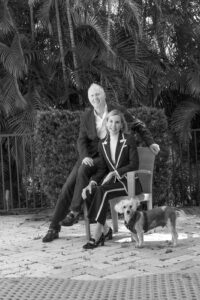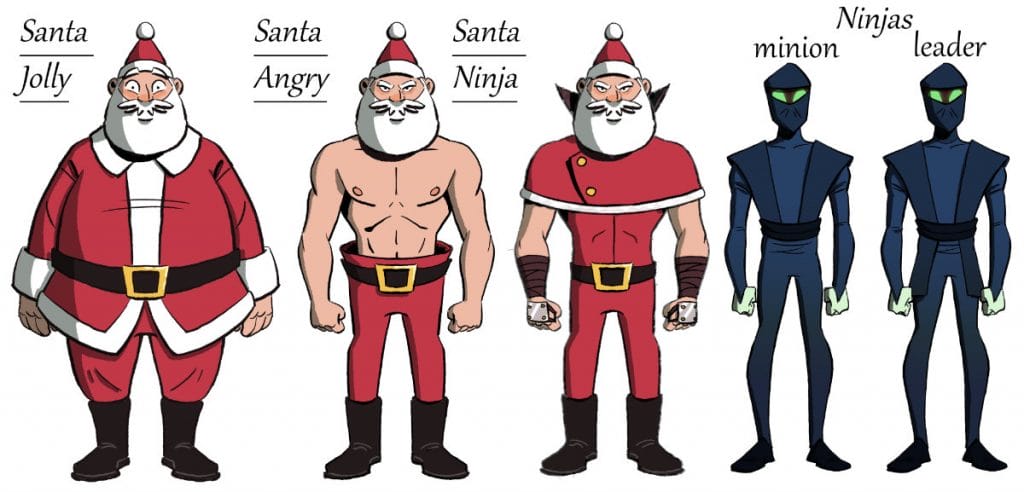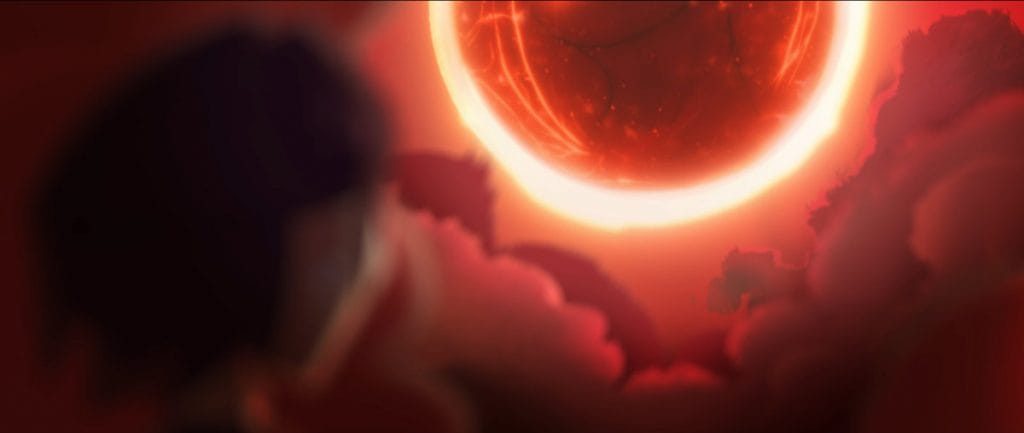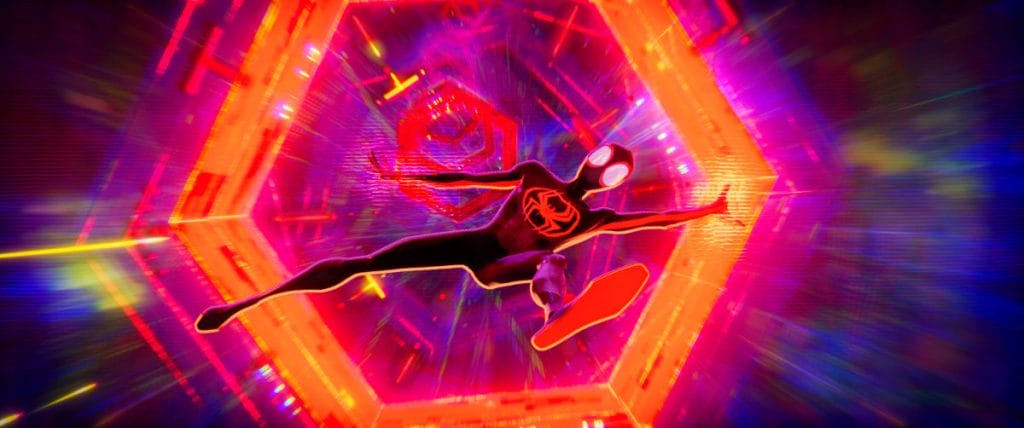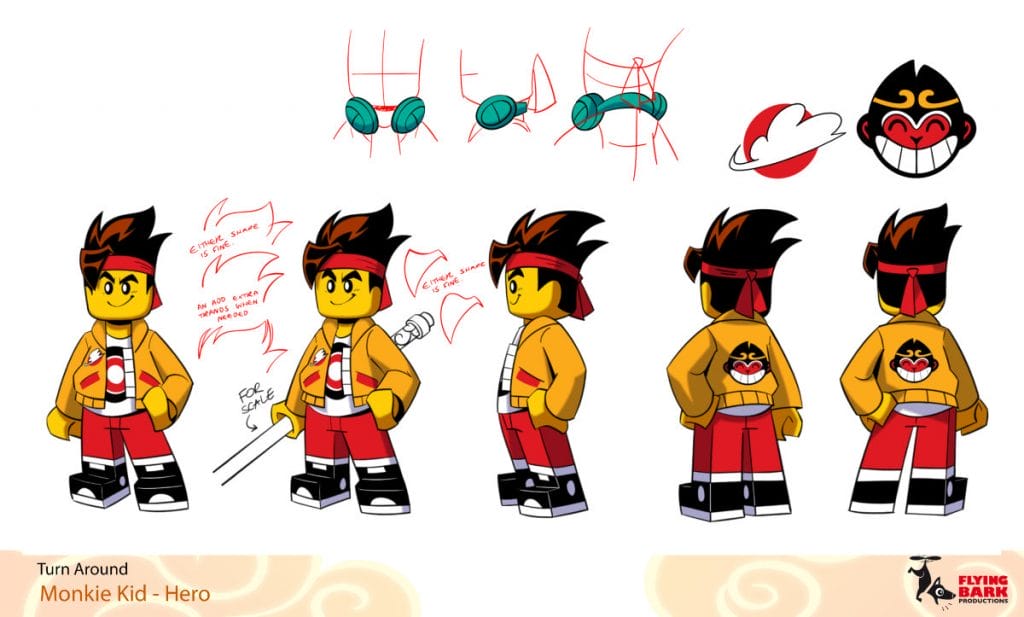Belfast-based animation studio Sixteen South is developing a 2D animated series based on popular Canadian kids’ book A Horse Named Steve, written by Kelly Collier (author and illustrator). The project is a co-production with Canadian studio Nelvana. A Horse...
Belfast-based animation studio Sixteen South is developing a 2D animated series based on popular Canadian kids’ book A Horse Named Steve, written by Kelly Collier (author and illustrator). The project is a co-production with Canadian studio Nelvana.
A Horse Named Steve follows an endearingly silly horse named Steve who finds a magical golden horn in the forest. When Steve attaches it to his head, it allows him to be exceptional. But when he loses the horn, Steve embarks on a mission to rediscover his best self.
To learn more about the project and its pitching process, we caught up with Colin Williams (creative director), Katie Lyons (development producer) and David McGrath (supervising director) from the development team at Sixteen South.
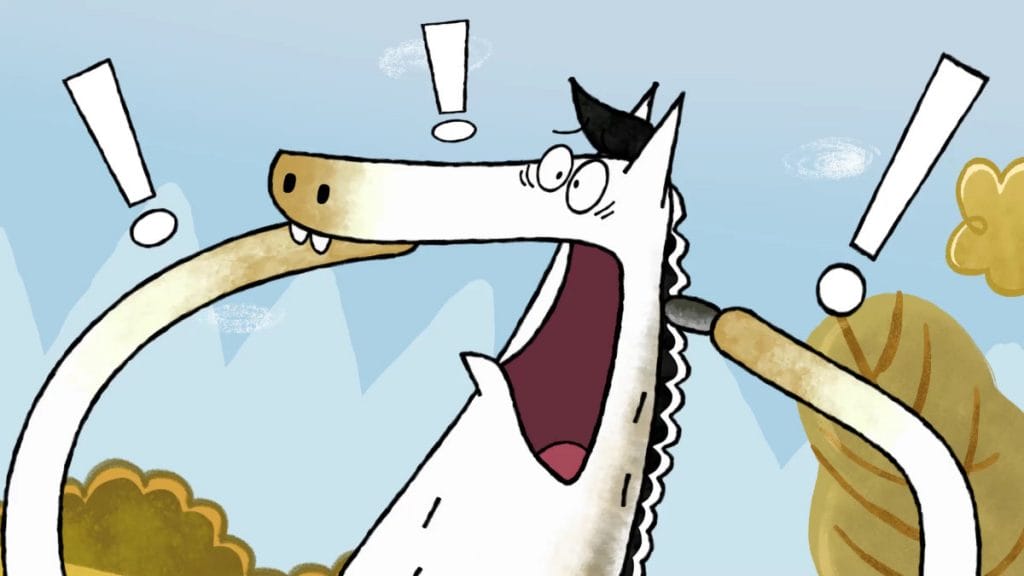 Still image from A Horse Named Steve‘s pitch trailer provided by Sixteen South.
Still image from A Horse Named Steve‘s pitch trailer provided by Sixteen South.
To start, can you share a bit about Sixteen South?
Colin: The studio actually turned sixteen years old this year! Sixteen South started off working as live action and puppet show producers. Our first 4 shows were all puppet shows, and so naturally, we became known as the puppet guys. This isn’t really what we had wanted for the studio. Our goal had been to make content that was visually striking, hand-made with high production value.
Our first animated series was Lily’s Driftwood Bay, which was a mixed media show. It was 2D animated but looked a bit like stop motion. Everything on screen in the series, from sets and props to characters, was crafted from actual things found washed up on beaches.
Following Driftwood Bay we worked on Claude, a book adaptation done in a hand-drawn style, and Wildwoods, a live-action puppet comedy. We also co-produced I think 170 184 episodes of a PBS Kids series called Pinkalicious & Peterrific.
More recently, we worked on Odo, a series which I would argue is more than 2D, it’s 2.5D. The series was done in Toon Boom Harmony, where we introduced post-production lighting on the 2D characters. This gave them a 3D look, which is why I call it 2.5D. We’ve sold Odo all over the world, to 160 countries. Our most recent show is called Coop Troop. It’s our first CG show, and it’s a co-production with Mikros Animation in Paris.
We’ve done quite a lot to date, and now, we’re really hoping to focus on development work. Although we’ve done lot’s of in-house work, we’re keen to bring on partners to do more development.
Given this, it worked out perfectly that Nelvana was so interested in working with us on A Horse Named Steve. They’re the perfect partner – we’re sharing development, production, and distribution with them.
What is A Horse Named Steve about?
Katie: Steve is the protagonist of the book and the series. He’s a 7-year-old, who happens to be in the body of this big horse. This lends itself to humor because he’s really big, but he’s also a goofy kid. So he’s experiencing the world in the way that our audience of children does.
It’s of course still a development project, so we’re still exploring what we can do with Steve’s world. But it is a world of lush forest and greenery. It’s a world of animals, there’s no human elements. It will have an ensemble cast, and be full of funny personalities.
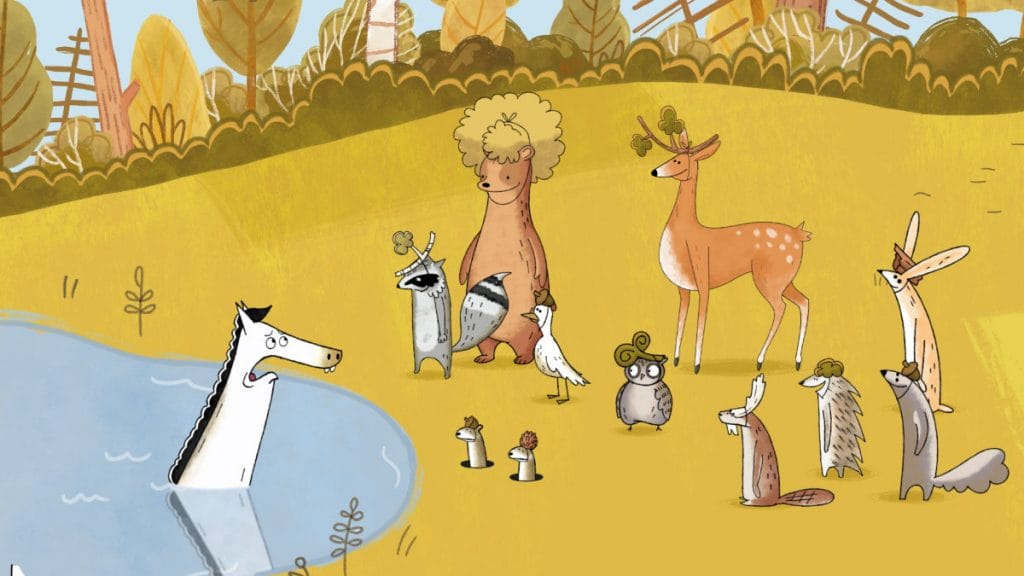 Still image from A Horse Named Steve‘s pitch trailer provided by Sixteen South.
Still image from A Horse Named Steve‘s pitch trailer provided by Sixteen South.
What drew you to developing A Horse Named Steve into a series?
Katie: A Horse Named Steve is based on two books by author-illustrator Kelly Collier. She created this world where Steve and all his friends live. The books have a very graphic style, which is what initially drew us in – it’s really beautiful.
Once we read the books in full, we were sold on Steve’s character. He’s fantastically silly, and you’re left wanting to see so much more of him, beyond what exists in these two books. We saw that in making the series, we would have an opportunity to expand on Steve’s story.
David: Yeah, we were definitely drawn in first by how beautiful the characters are in the book – but then by the words that come out of the characters, because they’re hilarious. It’s the perfect marriage of these two elements.
We also loved the role of the narrator. The narrator is there mainly to add more comedy to the story rather than explain what’s happening. She adds funny little asides to the things that Steve says, which make the series funny for an older audience, too.
We were really excited about working on the series because it was just so clear that A Horse Named Steve ticked all the boxes we look for when looking at developing an animated series.
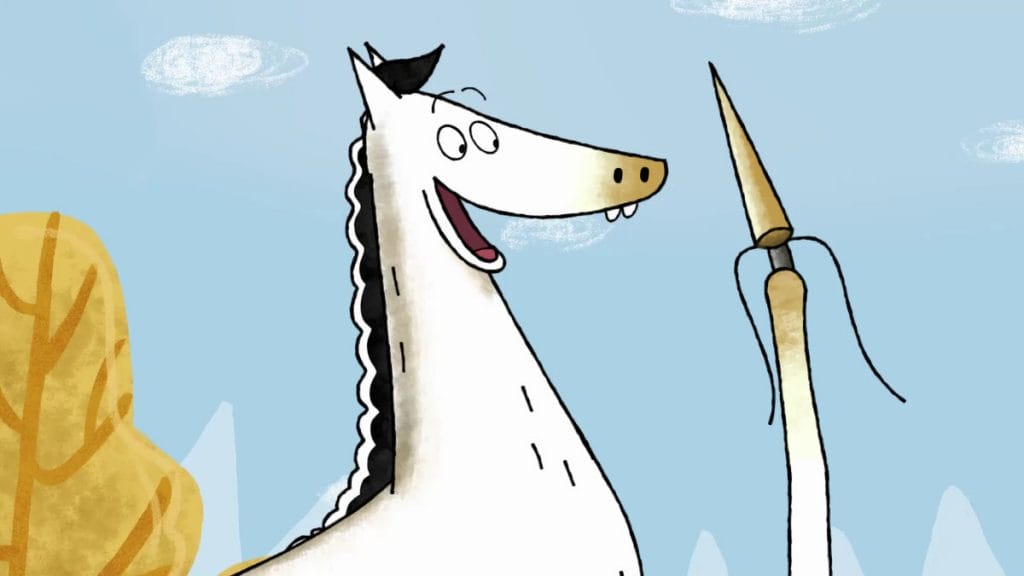 Still image from A Horse Named Steve‘s pitch trailer provided by Sixteen South.
Still image from A Horse Named Steve‘s pitch trailer provided by Sixteen South.
How did Sixteen South get involved with developing A Horse Named Steve, which is originally a book, into a series pitch?
Colin: It all started when we read an article from Kidscreen that listed some great books that could be considered for TV adaptations. There were a couple books listed, and to be honest, most of them didn’t appeal to us. But A Horse Named Steve was part of the list, and it caught our attention.
We were immediately drawn to the art style, and so we got our hands on an audiobook of it. The audiobook was voiced by Rainn Wilson, and listening to it, we knew right away, ok, this is our kind of humor.
We wrote to the publisher, Kids Can Press. We asked them if we were too late, but they responded saying no, that we were the first people to get in touch about A Horse Named Steve. Over one phone call it was decided that we were going to go for it. We began the process of optioning the book.
It was in the early process that we learned that Kids Can Press are part of the Corus family, and that Nelvana is as well. We’d genuinely wanted to work with Nelvana for years. Every time we’d meet with them we’d all say, okay, let’s find a project to work on, but up until this point the right project hadn’t come along.
Kids Can Press suggested that we talk to Nelvana about A Horse Named Steve, and we were obviously on board. We reached out, and they responded that the book was on their radar and they would love to option it as well. We decided that we should work on it together.
From there we created the bible, worked on a script, and created a trailer. We took it all to the Cartoon Forum where we pitched it.
Can you share a bit about the pitching process for A Horse Named Steve?
Colin: To pitch the series, we made a 45-second trailer for A Horse Named Steve and took it to Cartoon Forum. Cartoon Forum is a pitching and co-production forum for animated TV projects. For several days, producers have the chance to pitch projects in front of broadcasters, investors and other potential partners from all over the world.
When you go to Cartoon Forum, you start with showing the trailer, which is essentially your call card. The trailer should capture enough attention that people want to attend your pitch, which is where you get to really sell the project. The better your trailer, the more likely you’ll have an audience at your pitch. Ultimately, your goal is to convince broadcasters that they should buy your show.
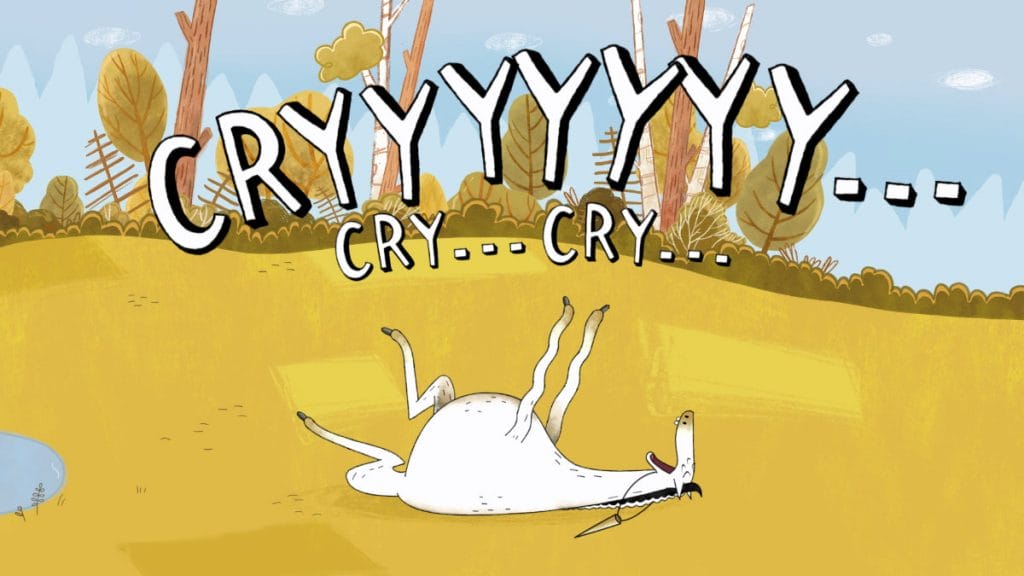 Still image from A Horse Named Steve‘s pitch trailer provided by Sixteen South.
Still image from A Horse Named Steve‘s pitch trailer provided by Sixteen South.
Are there specific considerations to keep in mind when you’re creating a pitch?
Colin: Yes, it’s important to think about the goal of the trailer, and the goal of the pitch. With the trailer, you’re just trying to capture attention. The trailer should give the audience a basic understanding of who the character is, what their world is, and what they’re all about. This is a pretty difficult task with only 45 seconds!
Dave: The broadcasters sit through 80 pitches, they hear about many projects. And so with your pitch, the goal is to be not just noticed, but remembered. Many of the pitches are very formulaic, and so to stand out, you want to play with that formula a bit. I didn’t attend the pitch this year, but our guys who went did an exceptional job.
I’ll also mention that one of the main challenges of Cartoon Forum is that you apply, wait to get accepted, and then once you’re accepted, you have just a few weeks to get ready for it. It’s a bit of a sprint between being accepted and heading to the forum. For A Horse Named Steve, we had just 2 months to prepare.
In pitching A Horse Named Steve, what was the reaction like?
Colin: The reaction has been really great. I think in part because of how the show looks, but also because Steve is just such a great character. His character’s style of humor is very tongue-and-cheek and deadpan, it’s almost borderline annoying. And while it’s a series made for kids, I think Steve is a fun watch for adults, too.
In pitching, we had a phenomenal response from broadcasters, and many of them are proactively asking about the series, and asking us to send materials. We’re working on getting A Horse Named Steve into production for next year.
Are you able to share a bit about why you went with watercolor shading and a textured look?
Katie: The book’s illustration style is grayscale, black and white, with a limited color palette. It’s a very beautiful look, but for animation, we thought that more color would help in holding the audience’s attention. We decided to keep Steve looking as close as possible to how he looks in the book, and then do bright, colorful backgrounds. We maintained the textured look as well, because that’s also true to the book.
What tips or advice do you have for creators who are working on their own pitch films, or gearing up to pitch a series in general?
Colin: In these pitches you’ve got one minute to impress somebody before they decide either “this is boring” or “I love this.” In those first few seconds you either capture a person’s attention or you don’t. There’s a lot of stuff being pitched out there, and part of what will help you stand out is being able to capture attention by selling what it is that makes your pitch unique.
Dave: You have to believe in what you’re pitching, because as Colin said, you have a finite amount of time to sell it. You can’t go in cold. You need to know exactly what you’re selling, and absolutely everything about it. It’s important to practice your pitch a lot, and practice it on real people. Ideally, practice it on people you don’t know, so you get out of your comfort zone.
It’s also really important to do your research about who you are pitching to. You need to be able to explain upfront why your pitched series belongs on a specific network. Often, people rush into things because they worry they will only have one opportunity. But if you’re not researched and ready, you’ve missed that opportunity either way.
Lastly, ask for advice. So many people want to help, because we all have the common goal of wanting to make great shows.
Katie: I agree with Dave – Knowing who you are pitching to is extremely important. You want to know in advance who the people you are pitching to are, and what their roles in the industry are. Beyond that, I think it’s helpful to keep on top of what is going on in the industry in general, and it’s helpful to network.
Are you an artist capable of exceptional work? Be sure to visit the careers page belonging to a studio named Sixteen South. Interested in learning how to composite scenes in Harmony Premium? Toon Boom Animation offers instructor-led training courses.
The post Sixteen South saddles up with A Horse Named Steve appeared first on Toon Boom Animation.



